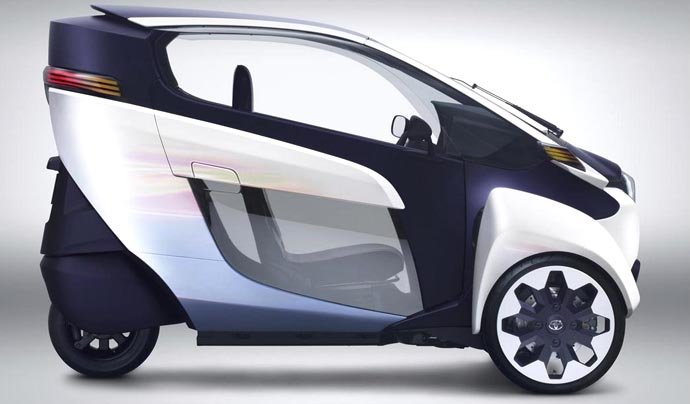Introduction to Mobility Scooter Cars
Mobility scooter cars address a significant development in private transportation intended to improve versatility for people with handicaps or versatility impedances. These vehicles mix the conservativeness of a bike with the elements and well-being guidelines of a car, offering clients expanded freedom and comfort in exploring public streets. Starting around 2023, roughly 10% of people aged 65 and older in the US depend on some type of portability help gadget, exhibiting a developing interest in open transportation arrangements. Versatility bike vehicles ordinarily highlight progressed well-being advances, such as impact evasion frameworks and ergonomic plans customized for openness. This guide investigates the advantages, functionalities, and guidelines encompassing portability bike vehicles, meaning it gives extensive bits of knowledge into their part in present-day metropolitan versatility arrangements.
Benefits of Driving a Mobility Scooter Car
Driving a portable bike vehicle offers critical benefits for clients looking for improved versatility. These vehicles are a suitable option in contrast to conventional vehicles for brief-distance travel, adding to diminished fossil fuel byproducts and clogging in metropolitan regions. Studies demonstrate that Mobility Scooter Cars can accomplish energy efficiencies of up to 80 MPGe (miles per gallon same), making them harmless to the ecosystem decisions.
Also, their conservative size considers simpler leaving and mobility in clogged city roads, tending to everyday difficulties faced by more oversized vehicles. Clients benefit from further developed openness highlights, like customizable seating and simplicity of section, advancing solace during movement. In addition, Mobility Scooter Cars are frequently qualified for exceptional leaving licenses and exclusions, further working with consistent routes through metropolitan conditions. This part investigates these advantages exhaustively, highlighting the functional benefits of incorporating Mobility Scooter Cars into individual transportation arrangements.
Types of Mobility Scooter Cars
Mobility scooter cars come in different kinds and are custom-fitted to various client needs and inclinations. Grouping under unambiguous guidelines, these vehicles incorporate minimal models, with speeds ordinarily running between 8 and 15 mph. They are legitimate for use on walkways and passerby pathways in numerous purviews, offering expanded availability for clients with portability challenges. Rapid models, equipped for arriving at speeds up to 25 mph, are intended for street use in metropolitan and rural conditions, giving a flexible choice to longer drives.
Besides, three-haggle wheel designs take care of strength and mobility prerequisites, guaranteeing well-being and solace during movement. Cross-breed models consolidate electric and fuel-controlled frameworks, expanding the reach and decreasing charging recurrence. These orders underline the variety and flexibility of versatility bike vehicles in gathering clients’ changed portability needs, improving their general transportation experience.
Safety Features of Mobility Scooter Cars
Mobility scooter cars focus on client well-being through cutting-edge highlights and plan components. These vehicles are furnished with fundamental well-being advances, such as hostile-to-impact frameworks, which assist with forestalling mishaps by distinguishing deterrents and applying brakes. A few models integrate dependability control systems that upgrade equilibrium and control, particularly during turns or on lopsided territory. Also, ergonomic seating and customizable elements advance solace and diminish the gamble of strain or injury during broadened use.
Measurements show that versatile bike vehicles furnished with these well-being improvements have reduced mishap rates among clients, highlighting their viability in further developing, generally speaking, street security. This segment investigates the creative well-being measures coordinated into versatility bike vehicles, featuring their part in giving secure and dependable transportation answers for people with portability debilitations.
Licensing Requirements for Mobility Scooter Cars
Exploring the administrative scene, authorizing prerequisites for mobility Scooter Cars fluctuate by ward, mirroring their arrangement and planned use. In numerous districts, these vehicles are arranged under unambiguous guidelines for low-speed vehicles (LSVs) or individual portability gadgets (PMDs). Authorizing frequently involves age limitations, with clients regularly waiting to be 16 years or more seasoned to lawfully work in Mobility Scooter Cars. A few wards expect clients to hold a legitimate driver’s permit or get a unique grant for working these vehicles on open streets.
Consistency with security norms, like lighting and flagging prerequisites, is additionally commanded to guarantee permeability and street well-being. Understanding and adhering to these permitting necessities are fundamental for clients to securely and lawfully enjoy the advantages of Mobility Scooter Cars while exploring public streets and metropolitan conditions.
Licensing Requirements for Mobility Scooter Cars
Authorizing necessities for Mobility Scooter Cars fluctuate broadly across locales, mirroring their grouping and planned use. In the US, these vehicles are often arranged under Low-Speed Vehicles (LSVs) or Individual Portability Gadgets (PMDs), each with explicit guidelines regarding procedures on open streets. For the most part, administrators should meet age requirements, regularly beginning from 16 years of age, and may require a legitimate driver’s permit or an exceptional license contingent upon neighborhood regulations.
Security principles, including lighting and flagging prerequisites, guarantee permeability and adherence to street rules, adding to generally speaking well-being for the two clients and people on foot. Consistency with these guidelines is urgent for lawfully working Mobility Scooter Cars in metropolitan and rural settings. Understanding neighborhood permitting subtleties assists clients with exploring these vehicles dependably, upgrading portability while sticking to lawful necessities intended to advance protected and productive transportation arrangements.
Rules of the Road for Mobility Scooter Cars
Exploring public streets, rules for Mobility Scooter Cars are fundamental to guarantee protected and lawful activity. These vehicles should comply with explicit guidelines based on their arrangement as Low-Speed Vehicles (LSVs) or Individual Portability Gadgets (PMDs). For example, in the US, LSVs depend on government guidelines that administer their most extreme speed (commonly 25 mph) and are used on streets with speed limits up to 35 mph. PMDs, then again, may have more confined guidelines that direct where they can work, frequently zeroing in on shared pathways and metropolitan regions.
Clients should comprehend and follow these guidelines, including respecting people on foot, obeying traffic lights, and utilizing assigned paths where necessary. Adherence to these guidelines not only guarantees the security of administrators and walkers but additionally advances the incorporation of Mobility Scooter Cars into existing transportation frameworks, working with smooth and proficient metropolitan versatility arrangements.
Modifications for Driving a Mobility Scooter Car
Changes for driving a portable bike vehicle can improve convenience and solace in light of individual requirements. Regular changes incorporate ergonomic seating acclimations to oblige fluctuating prerequisites like level and stance. High-level models might include adjustable controls, permitting clients to adjust their control awareness and speed increase for ideal dealing. Security upgrades, like extra mirrors or vulnerable side discovery frameworks, further develop mindfulness and lessen mishap gambles.
Openness alterations, like inclines or lifts for simple passage and exit, are especially helpful for clients with restricted portability. According to industry information, these alterations contribute to further developed client fulfillment and broadened vehicle ease of use, underscoring the significance of customized transformations in improving overall versatility encounters. Understanding accessible changes and their advantages enables clients to fit Mobility Scooter Cars to their necessities, advancing freedom and solace in everyday transportation exercises.
Choosing the Right Mobility Scooter Car
Picking the right versatile bike vehicle includes considering different variables to meet individual portability needs. Models shift in size, speed, abilities, and elements, caring for various inclinations and necessities. For example, reduced models are great for exploring restricted spaces and walkways. At the same time, higher-speed variations offer more prominent adaptability for longer drives. Client-explicit contemplations, such as seating solace, availability elements, and battery range, are essential in choosing the most reasonable vehicle.
Measurements demonstrate a developing business sector for versatility helps, with an expected worldwide market size of $8.7 billion by 2026, reflecting expanding requests and development in this area. Understanding these choices engages clients to settle on informed choices, guaranteeing that their picked versatile bike vehicle aligns with their way of life and improves their general portability and freedom.
Mobility Scooter Car FAQs: Your Top Questions Answered
What are the legal requirements for operating a mobility scooter car?
Mobility Scooter Cars are usually arranged under unambiguous guidelines, like Low-Speed Vehicles (LSVs) or Individual Portability Gadgets (PMDs), which direct where and how they can be utilized on open streets. Prerequisites frequently incorporate age limitations and may require a driver’s permit or unique grant contingent upon neighborhood regulations.
How much maintenance do mobility scooter cars require?
Unlike conventional vehicles, versatile bike vehicles require negligible support because of their electric plan. Yearly expenses are generally lower, as they have fewer mechanical parts that need ordinary adjustment.
What safety features are available on mobility scooter cars?
Wellbeing highlights fluctuate yet frequently incorporate crash evasion frameworks, dependability controls, and ergonomic plans to upgrade client security. These advances assist with forestalling mishaps and further develop general street security.
What are the benefits of choosing a mobility scooter car over a traditional vehicle? Benefits incorporate ecological amicability, decreased working expenses, and upgraded mobility in metropolitan settings. These vehicles offer autonomy and accommodation for clients with portability disabilities.
How do I choose the right mobility scooter car for my needs?
Elements to consider incorporate size, speed abilities, battery reach, and availability highlights. Picking the suitable model guarantees it meets explicit portability necessities and upgrades day-to-day transportation needs.
Are there financial incentives or subsidies available for purchasing a mobility scooter car?
A few locales offer incentives, such as tax reductions or refunds for buying electric vehicles, including Mobility Scooter Cars. Checking neighborhood government assets can give data on accessible monetary help choices.
Conclusion
Mobility Scooter Cars address a critical headway in private transportation, particularly useful for people with portability challenges. These vehicles offer reasonable answers for exploring metropolitan conditions, joining the comfort of a bike with the security elements of a car. From negligible upkeep necessities to improved security highlights like crash aversion frameworks, Mobility Scooter Cars give autonomy and usability.
Picking the suitable model includes considering elements like size, speed, and availability highlights to best suit individual necessities. As the interest in practical and open transportation develops, Mobility Scooter Cars are urgently involved in advancing portability while diminishing natural effects. By understanding legitimate prerequisites, security elements, and upkeep contemplations, clients can with certainty incorporate these inventive vehicles into their daily routines, working on both personal satisfaction and transportation proficiency.





2 thoughts on “Mobility Scooter Cars: A Guide to Navigating Public Roads”